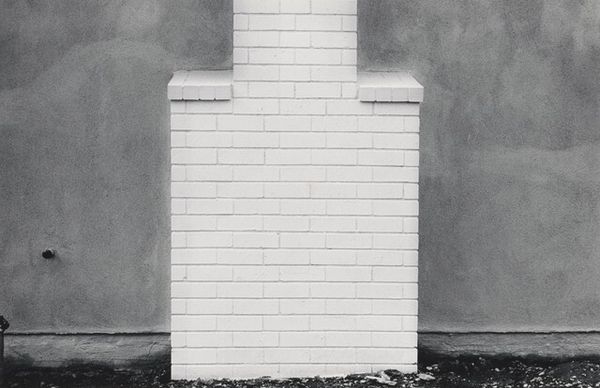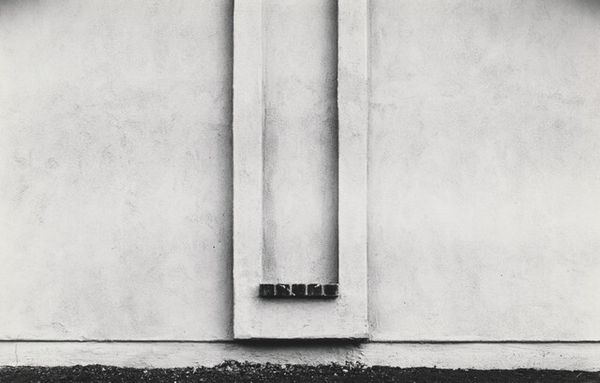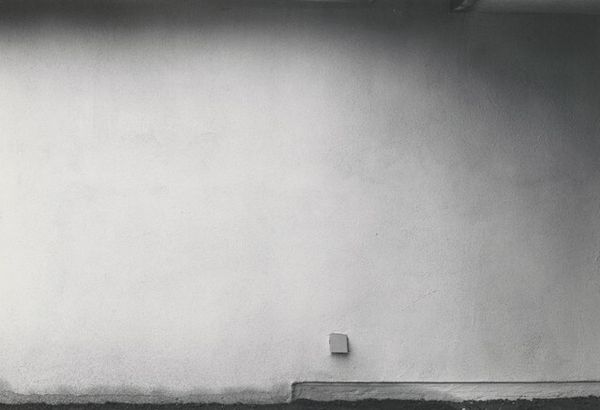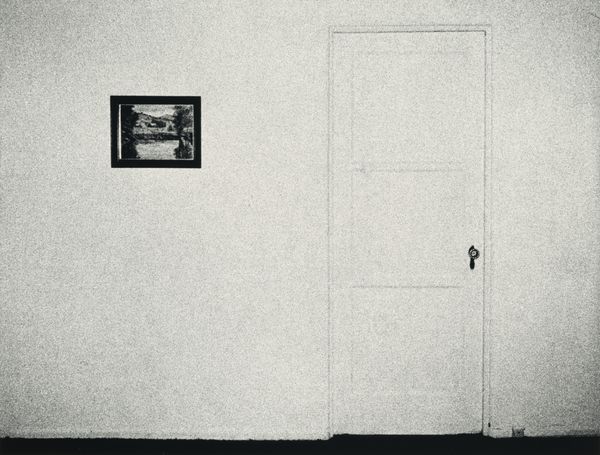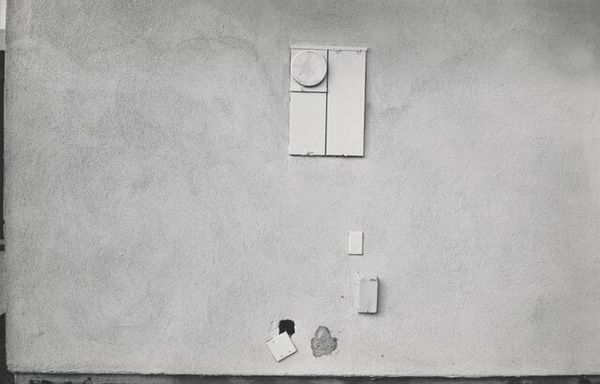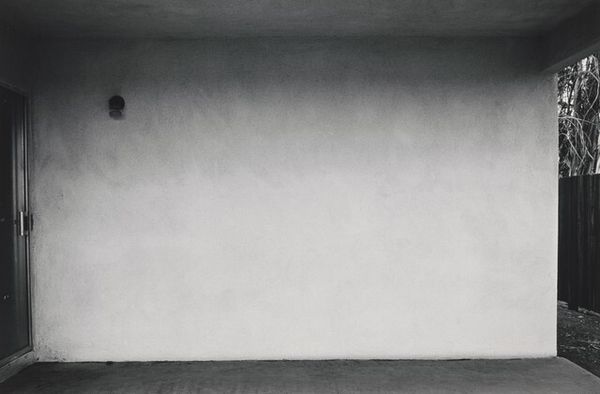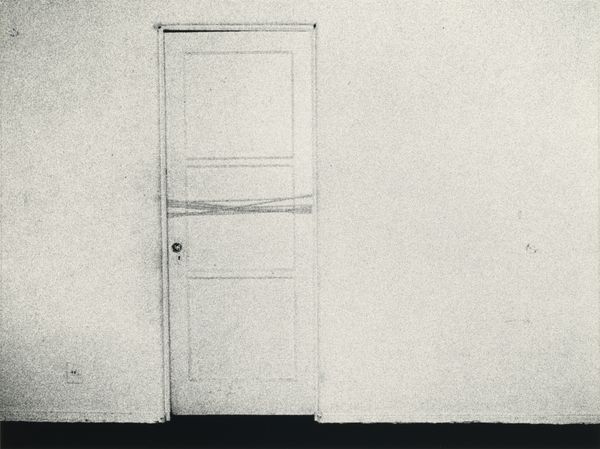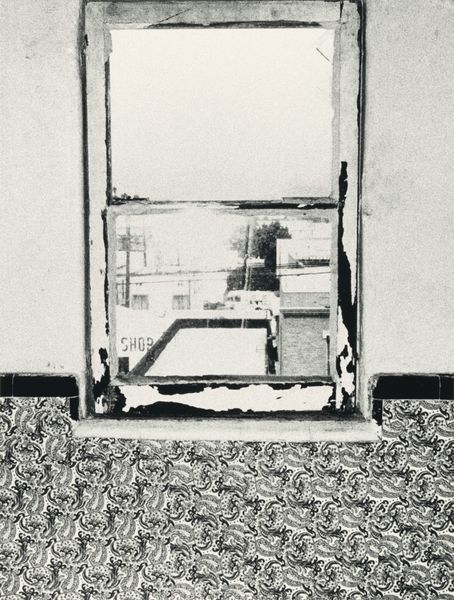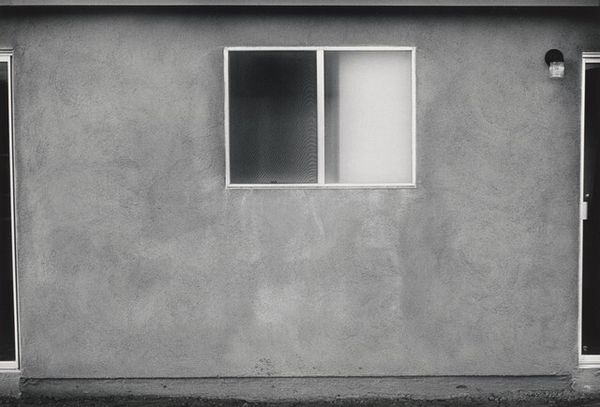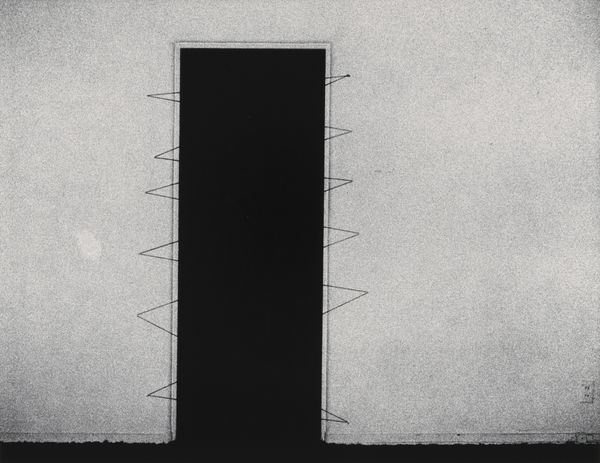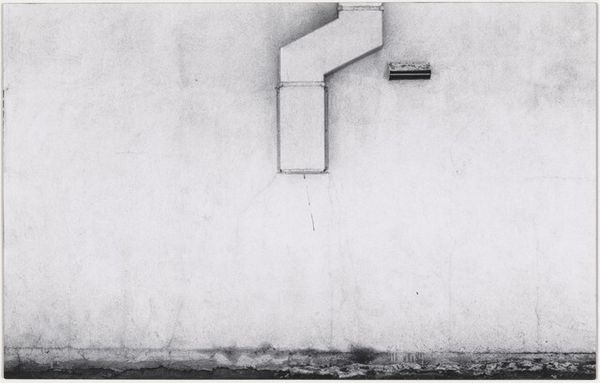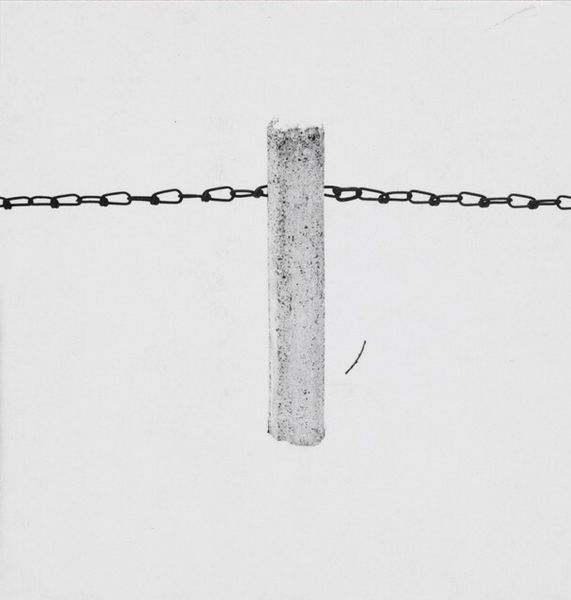
photography
#
monotone colours
#
conceptual-art
#
minimalism
#
black and white format
#
monochrome colours
#
photography
#
cityscape
Dimensions: image: 14.1 × 21.4 cm (5 9/16 × 8 7/16 in.) mount: 27.8 × 27.8 cm (10 15/16 × 10 15/16 in.)
Copyright: National Gallery of Art: CC0 1.0
Curator: Standing before us is "Tract House #8," a stark black-and-white photograph taken by Lewis Baltz in 1971. What are your initial thoughts? Editor: Bleak, utterly bleak. But compelling. There’s a weight here, an almost oppressive sense of…nothingness? The stark contrast between the grey concrete and the bright white brick creates a very unsettling juxtaposition. Curator: It's definitely intended to evoke that reaction. Baltz was interested in documenting the banal and often dehumanizing aspects of suburban development in the 1970s. This image is part of his "New Industrial Parks near Irvine, California" series. He challenges the myth of the idyllic suburban life. Editor: The visual symbols are interesting. The brick section looks almost like a doorway, or maybe a tombstone. But a doorway to where? It’s blocked and featureless, suggesting an end rather than a beginning. The gray surface beside it, a kind of forbidding curtain or blank slate…I am unsure. Does it represent conformity, perhaps? Curator: That interpretation certainly aligns with the socio-political context. Think about the post-war housing boom and the rise of mass-produced, cookie-cutter homes. Baltz, along with other "New Topographics" photographers, questioned the social engineering implicit in these developments. The seemingly objective style emphasizes the alienation of the individual within this system. Editor: It feels incredibly detached. Like looking at an alien landscape stripped of all signs of human personality. Was he concerned about urban planning? It is very modernistic. Curator: Absolutely, Baltz aimed to make a statement about urban sprawl and the environmental impact of unchecked development. He was interested in disrupting traditional notions of landscape photography. Instead of romantic vistas, he focused on the ugly and overlooked spaces on the margins of cities. The banality is the point, in a way. Editor: The monochrome adds another layer, simplifying everything to essential forms and values. The wall represents both literally, a physical structure, and symbolically, a barrier or obstacle. Even something insurmountable? What would you suggest that represents in the urban context? Curator: It serves as a symbol of the restrictions that constrain freedom of movement in planned communities. Its aesthetics suggest a certain kind of austerity. And that's its point! Its existence represents the loss of personal expression within an urbanized existence. Editor: After considering it more, I agree; it does create an important discourse on city planning. Curator: His influence on photography has been really significant. He paved the way for a new kind of artistic expression! Editor: A powerful statement with such a seemingly simple image, truly food for thought.
Comments
No comments
Be the first to comment and join the conversation on the ultimate creative platform.
